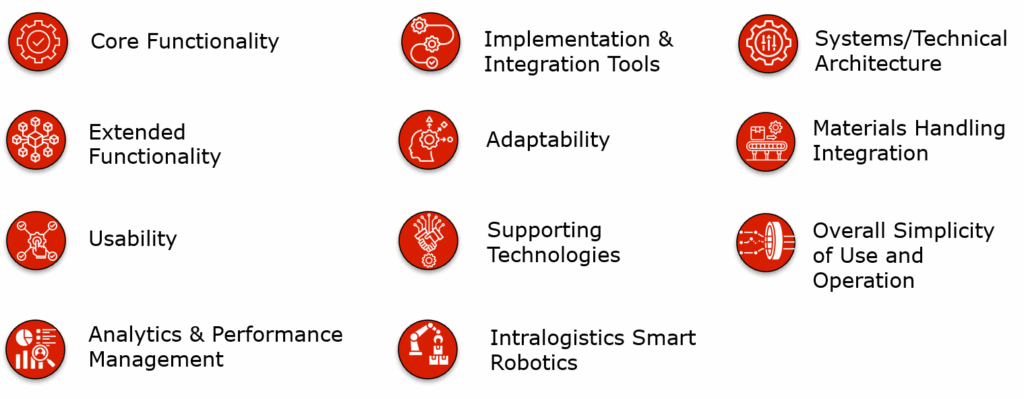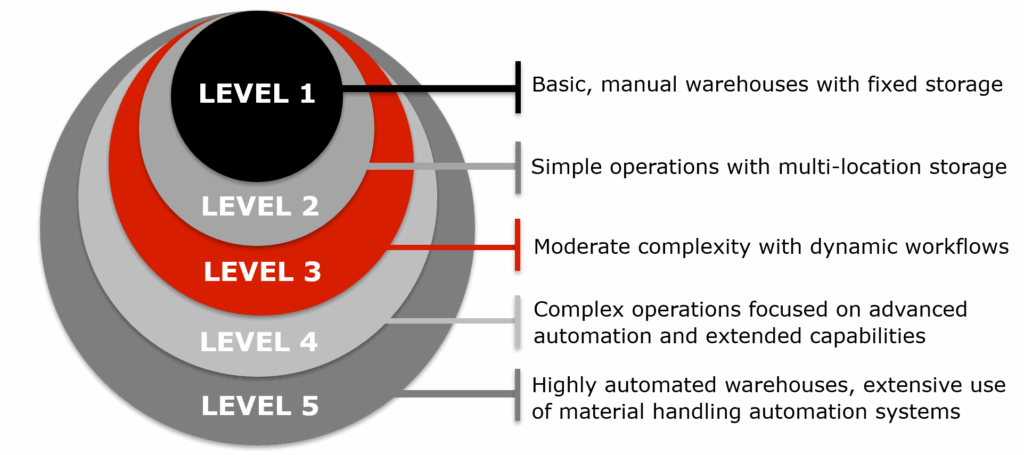
The Warehouse Management System (WMS) market exceeded $3 billion in 2024 and has a five-year CAGR forecast in double digits.* That growth reflects a clear trend—many organizations are actively evaluating or planning to invest in a WMS to meet rising customer expectations, support operational complexity, and enable digital transformation.
But this momentum comes at a time of economic uncertainty, when every investment is under greater scrutiny. At the same time, WMS pricing models are becoming more complex, and the cost of implementation continues to rise. So how can you ensure that your WMS investment delivers value—not just today, but in the years ahead?
To help answer that question, we gathered industry experts for a discussion on the current state of the WMS landscape, including insights from two of the industry’s most influential reports: the 2025 Gartner® Magic Quadrant™ for Warehouse Management Systems and its companion piece, Critical Capabilities for Warehouse Management Systems.
Here’s what the pros have to say about making the most of that data—and what else you should know before investing in a new WMS.
Watch the full discussion here
WMS Tip #1: Core Capability Parity Is Real—Focus on Fit, Not Just Features
Don’t get distracted by feature checklists—most leading WMS providers offer near-functional parity when it comes to core capabilities. Focus instead on how well the solution fits your operation, supports your growth, and integrates with your ecosystem.
Howard Turner, Director Supply Chain Systems, St Onge, stresses that differentiators today go beyond functionality. He recommends that buyers assess:
- IT strategy and technical architecture
- SaaS deployment and support models
- Cultural fit with the vendor
- Pricing structure
- Ease of training and use
- Quality of the implementation approach
In a mature market with functional parity, these strategic and operational factors often make the difference between a successful partnership and a costly misalignment.
WMS Tip #2: Volatility is the New Norm, Flexibility Is Key—Choose a WMS That Can Adapt with You
Flexibility isn’t just a nice-to-have—it’s essential in today’s unpredictable supply chain environment. Greg Utter, Senior Managing Director, Alpine Supply Chain Solutions, emphasizes that flexibility starts with future-focused design. “What you’re doing today will likely evolve—whether through new fulfillment models like cross-docking, increased compliance requirements, or expanded lot control. When building your WMS requirements, keep your future state in mind and ensure the vendor can scale and adapt with you.” A WMS that supports long-term growth and change will help you respond confidently to whatever challenges come next.
WMS Tip #3: Prioritize Fit, Integration, Usability, and Adaptability

There’s a lot happening in the market right now—but at the end of the day, operations need to stay focused on what matters most for their unique requirements. Still, if our experts had to pick a few Critical Capabilities that are especially important in today’s environment, they would be:
- Implementation and integration tools
Utter emphasized integration as a critical factor—often the most complex part of a WMS project. Buyers should ensure the system can connect seamlessly with existing and future technologies, including material handling equipment, robotics, and broader supply chain systems. - Simplicity of use and operation
All experts agreed: the system must be intuitive and easy to navigate. Minimize clicks, simplify data entry, and ensure warehouse staff can quickly learn the system. A user-friendly interface accelerates onboarding, improves productivity, and contributes to faster time-to-value. - Core and extended functionality
Turner stressed the importance of aligning the WMS with your business-critical processes. He recommends clearly identifying “must-have” vs. “nice-to-have” functionality, and using that framework to evaluate how well each system supports your current and future state requirements. - Adaptability
Amit Levy, EVP of Sales and Strategy, Made4net, called out the need for systems that can evolve with the business—especially in today’s fast-changing environment. Look for platforms that support low-code configuration, templated workflows, and rapid adjustments without heavy vendor dependency.
WMS Tip #4: Focus on Configurability to Drive Speed, Scalability, and ROI
Configurability isn’t just a nice feature—it’s a strategic necessity. Levy explains, “Speed, flexibility, and scalability are essential. When evaluating implementation and integration tools, customers focus on how these capabilities reduce time to value and lower long-term total cost of ownership—key factors in making a WMS investment worthwhile.” A configurable WMS allows you to adapt quickly without costly customizations, accelerating deployment and future-proofing your operations.
WMS Tip #5: Know Your Complexity to Find the Best-Fit WMS—Often at a Lower Cost

According to Levy, “Buyers are increasingly using Gartner’s Level 1–5 operational complexity model to assess WMS fit. They’re asking whether a solution meets current needs and can scale with future growth and automation goals. The Critical Capabilities framework helps map business priorities to the right system features—whether it’s adaptability and ease of deployment for Level 2–3 operations, or robotics integration and advanced analytics for Level 4–5. At the end of the day, the best WMS isn’t the one with the most features—it’s the one that aligns best with your strategy.”
WMS Tip #6: Build a Business Case Before You Buy
Investing in a new WMS can feel risky, especially amid economic uncertainty—but delaying can be just as costly. Utter advises starting with a solid business case.
Begin by asking some foundational questions:
- Is your current WMS nearing end-of-life or no longer supported?
- Are you facing new regulatory, compliance, or customer requirements that your current system can’t handle?
- Are you expanding into new sales channels, adding automation, or pursuing other growth that your WMS can’t support?
- Are labor challenges making current operations unsustainable?
It’s also critical to understand leadership’s perspective. At the C-level, the key question is often: Can we continue to operate effectively with the current system for the next few years? If the answer is yes, it’s harder to justify the investment—unless future needs clearly demand it.
Evaluate your key drivers, and be cautious of two common pitfalls:
- Inaction: Waiting too long can lead to bigger problems down the line.
- Overreaction: Rushing into a WMS replacement without a clear business case can result in costly, unnecessary projects.
In short, a WMS investment should be strategically driven, supported by data, and aligned with your future-state goals—not just a vague sense that “we need something new.”
Ready to take the next step?
If you’re actively evaluating or planning to invest in a WMS, we invite you to connect with our experts and explore Made4net’s WarehouseExpert™—a powerful, tier-one WMS built to support operations of all sizes with flexibility, scalability, and real-world performance.
Watch the full discussion here
Sources:
*Gartner, Magic Quadrant for Warehouse Management Systems, Simon Tunstall, Dwight Klappich, Rishabh Narang, Federica Stufano, May 1, 2025.
**Gartner, Critical Capabilities for Warehouse Management Systems, Rishabh Narang, Simon Tunstall, Dwight Klappich, Federica Stufano, 28 May 2025
Disclaimer:
GARTNER is a registered trademark and service mark of Gartner, Inc. and/or its affiliates in the U.S. and internationally, and MAGIC QUADRANT is a registered trademark of Gartner, Inc. and/or its affiliates and are used herein with permission. All rights reserved.
Gartner does not endorse any vendor, product or service depicted in its research publications and does not advise technology users to select only those vendors with the highest ratings or other designation. Gartner research publications consist of the opinions of Gartner’s research organization and should not be construed as statements of fact. Gartner disclaims all warranties, expressed or implied, with respect to this research, including any warranties of merchantability or fitness for a particular purpose.


